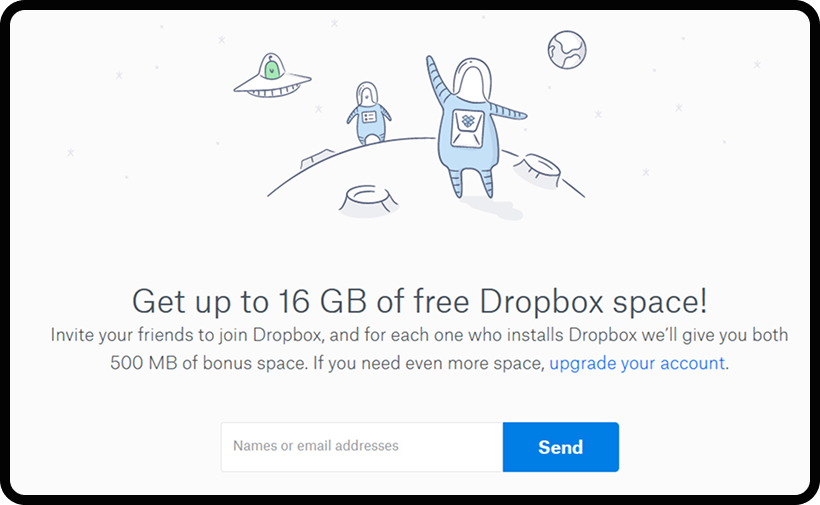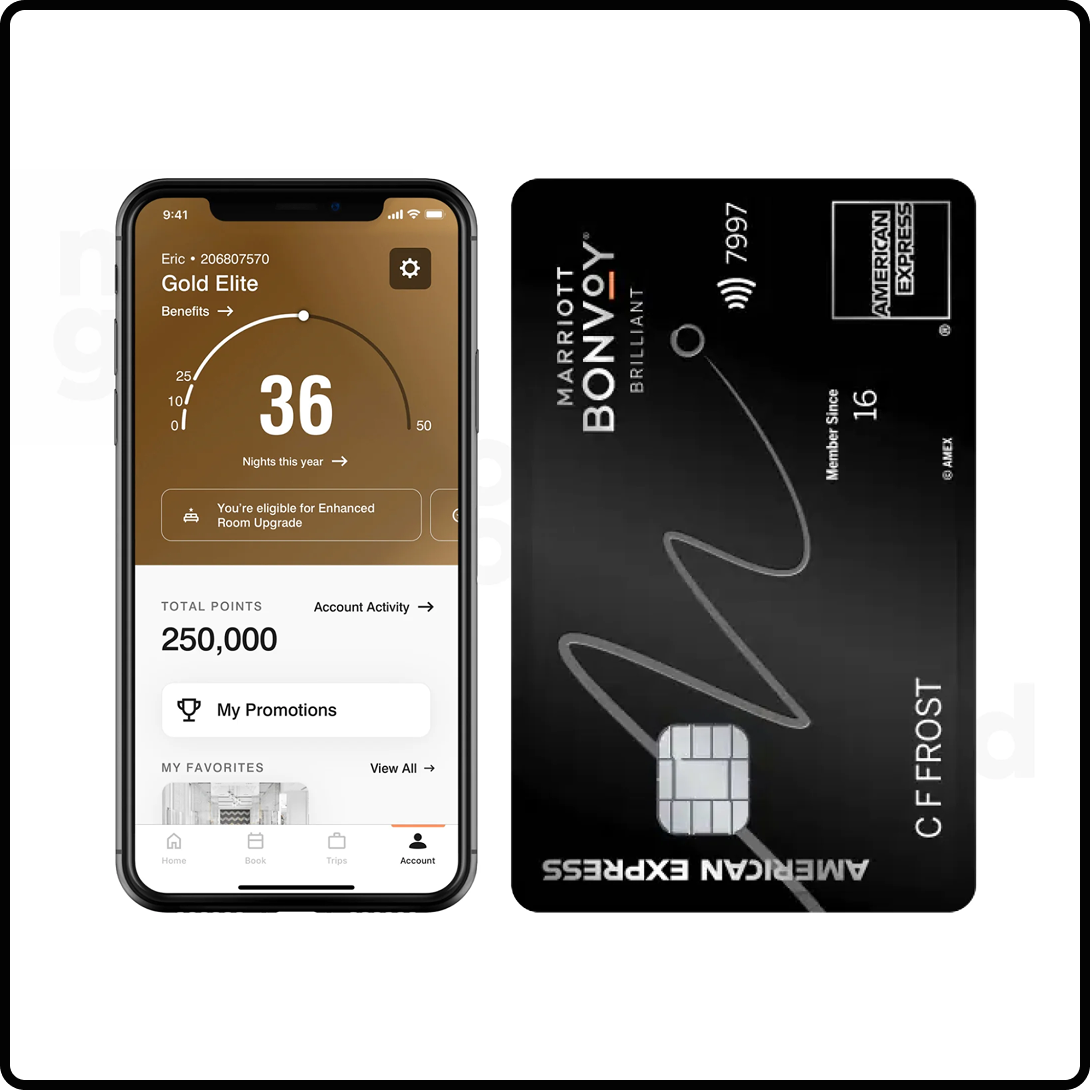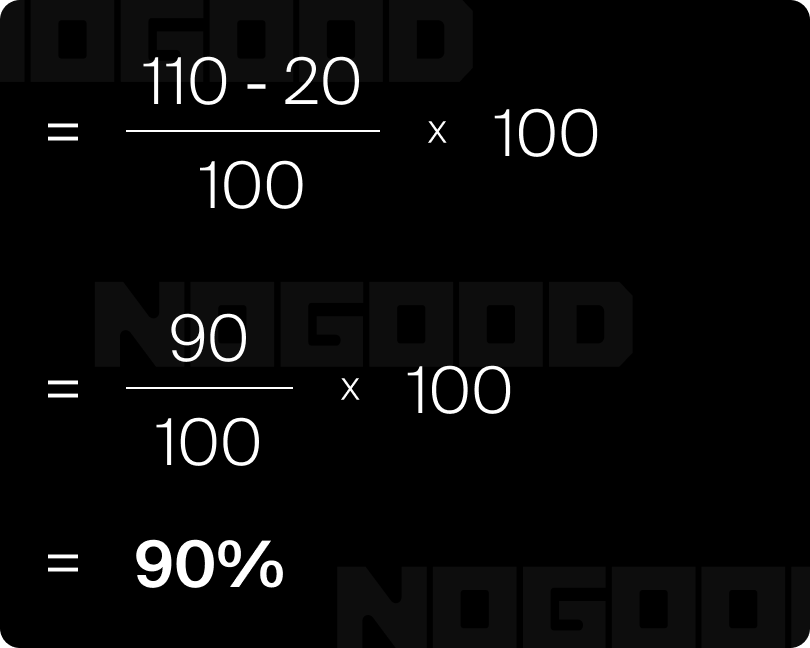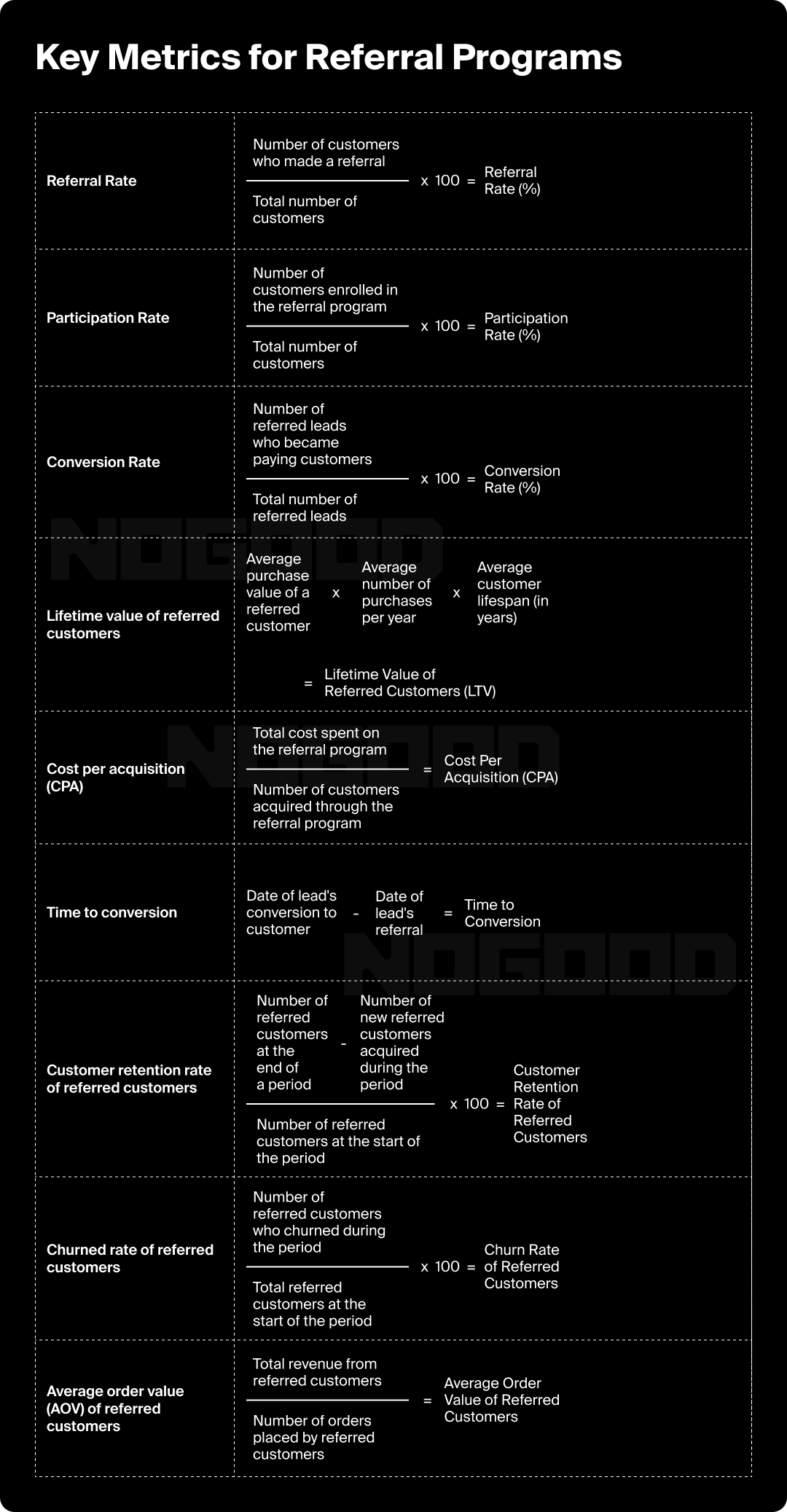It should come as no surprise that people trust the recommendations of their friends and family more than advertisements. But just how much more? 90% of people say they believe brand recommendations from friends, compared to only 8% who prefer internet advertisements as the best source of product information. That’s right. No matter how engaging your ad copy is, how thumb-stopping your images are, or how clever your campaign strategy is, it won’t hold a candle to someone telling a friend, “Hey, you know what you should try?”
As marketers, it’s our job to strategize and adjust tactics to acquire customers as efficiently as possible. Therefore, it only makes sense to harness the power of marketing referral programs to build an organic flywheel of sustainable, compounding growth.
What Is a Referral System in Marketing?
A marketing referral program is a conscious strategy leveraged by companies to incentivize loyal customers to organically advocate for the brand’s product or services. Existing customers share their positive experiences with their friends, family, and social network, effectively spreading the word in a socially-validated and credible way.

Referral marketing is essentially incentivized word of mouth. It’s when marketers work to influence and optimize the process of getting existing users to spread the word and help bring in new customers. Humans are social animals. If we find something cool or useful, it’s in our nature to want to tell our friends and social circles about it. Sometimes, the idea of helping a friend, combined with the social proof of being the one having a solution for them, is enough to complete the transaction—it’s a natural reaction.
There are times, however, when that’s not enough. It doesn’t necessarily mean you have an inferior product. Sometimes it just means that customers aren’t properly motivated to follow their human urge to share their recommendation. Additionally, while organic word of mouth is always valuable, how much can you really rely on it if it can’t be measured? That’s where referral programs come into play.
What Are the Benefits of Referral Marketing?
Referral marketing is one of the most cost-effective and impactful growth strategies for brands looking to acquire loyal, high-value customers. It not only reduces customer acquisition costs—it also improves retention, fosters long-term loyalty, and fuels a sustainable cycle of growth.
Below are some of the key benefits of referral marketing:
- Lower Acquisition Costs: Referral marketing minimizes spend on ads—your main cost is the incentive, which you can fully control and optimize.
- Higher Customer Retention: Referred customers have shown a 37% higher retention rate, making them more likely to stay loyal over time.
- Built-In Customer Loyalty: Referrers are often your most loyal customers—if they recommend your brand, it’s already part of their identity.
- Stronger Customer Lifetime Value: Customers acquired via referrals tend to spend more and stay longer, increasing their lifetime value to your business.
- Sustainable Growth Loop: Referred customers are more likely to refer others, creating a self-sustaining cycle of acquisition and loyalty.
- Boosts in Brand Advocacy & Reviews: Happy, appreciated customers are more likely to leave positive reviews, repurchase, and advocate for your brand.
Types of Referral Programs
Referral programs come in a myriad of shapes and sizes, each tailored to a specific type of business or goal. The key is to understand which one aligns best with your company’s objectives. Below are some of the most common types of referral programs—each explained using a successful case study as an example.
1. Two-Sided Incentive Program
In a two-sided incentive program, both the referrer and the referred customer receive a reward, creating a win-win dynamic. This mutual sense of benefit is perfectly suited for eCommerce, subscription services, and financial services.
Example: Dropbox famously offered both the referrer and the referee additional storage space for each referral, fueling their viral growth and user adoption.

2. Customer Referral Program
In this type of referral program, existing customers are incentivized to bring in new ones, often with discounts, perks, or even cash payouts. Customer referral programs are particularly successful in retail, eCommerce, and subscription services.
Example: Fiverr gives users 10% cash back when a referred user places their first order, making it easy and rewarding for customers to share.

3. Partner Referral Program
Partner referral programs consist of businesses referring clients to one another through strategic partnerships, often in SaaS solutions, consulting, or B2B settings.
Example: Amazon stands out for its innovative approach to referral marketing. Instead of providing direct cash or discounts, they offer affiliate marketers a commission of up to $3 for every visitor that starts a 30-day free trial of Amazon Prime.
4. Loyalty Referral Program
Referrals are often tied into a broader loyalty or membership program, where users earn points or merit for actions or rewards that can be redeemed later. It’s an excellent referral marketing strategy for improving customer retention and works wonders for the retail, hospitality, and airline industries.
Example: Evernote rewards users with points for each referral, which can be exchanged for months of premium service—perfect for their productivity-driven audience.
5. Advocate Marketing Program
In advocate marketing, the focus is on turning current customers into advocates. Encouraged by rewards, these customer advocates willingly promote your brand, helping to create a deep sense of community and customer loyalty. It’s particularly effective for subscription services, software, and community-based platforms.
Example: Notion runs an advocate marketing program through its Ambassadors initiative, where passionate users like creators and educators promote the platform by hosting events, sharing templates, and creating tutorials. In return, advocates get early feature access, exclusive perks, and community status—no cash involved. This builds organic buzz and deepens user loyalty through genuine advocacy.

6. Tier Referral Program
This type of program offers escalating rewards depending on the number or value of referrals made. Ideal for retail and digital services.
Example: Marriott Bonvoy is a great example of a tiered referral program in action. As members refer friends and continue to stay at Marriott properties, they climb through loyalty tiers—Silver, Gold, Platinum, and Titanium—each unlocking more valuable perks like bonus points, room upgrades, and late checkouts. The more you engage and refer, the better the rewards, making it a strong incentive for continued advocacy and loyalty.

These examples demonstrate how successful companies tailor their referral programs to match their brand and customer base. Whether it be through cash, credit, free products, or flexibility, each of these companies managed to motivate their existing customers to refer new ones.
The take-home message here is that a successful marketing referral program requires a deep understanding of your customer’s motivations and a design that aligns rewards with these motivations.
What Should be Included in a Referral Program?
An effective referral program isn’t just about asking customers to “spread the word.” It’s a thoughtfully designed system that motivates, rewards, and simplifies sharing your brand. Here’s what every strong referral program should include:
- A Clear Value Proposition
Make it obvious what’s in it for them. Whether it’s a discount, cash reward, free product, or loyalty points—people need a compelling reason to refer. And ideally, both the referrer and the referred get something out of it (a win-win).
- Easy-to-Use Sharing Tools
The fewer clicks required, the better. Provide users with unique referral links, social share buttons, email templates, or even QR codes—whatever method lowers friction and makes sharing the most seamless.
- Transparent Terms & Conditions
Avoid confusion or mistrust. Clearly outline how the program works, who qualifies, when rewards are issued, and any limits. Think: simple, jargon-free, and easy to find.
- Reward Structure & Timing
Be specific about what rewards are offered, as well as when and how they’re given. Instant gratification works best (e.g., reward after the first purchase), but if delays are necessary (e.g., after a subscription renewal), communicate that clearly.
- Built-in Tracking & Notification
Let users track their referrals and rewards in real time, and send notifications when they earn something. It builds excitement and encourages more sharing.
- Mobile Optimization
If your users are likely to share via phone (spoiler: they are), make sure the referral flow is mobile-friendly. That includes the landing pages and reward claim processes.
- Brand Voice & Personalization
Don’t forget to make it feel like your brand. Personalized invite messages or customizable templates can add yet another layer of authenticity that increases conversions.
- Testing & Optimization Tools
Like any marketing tactic, your referral program should evolve. Use A/B testing, track conversions, and experiment with different incentives or messaging to see what works best.
How to Market Referral Programs
Once you’ve chosen the right referral program for your business and drawn inspiration from the aforementioned successful examples, the next crucial step is promotion. Here’s how to get the word out—and make it stick.
- Use Every Channel Available
Utilize all of the communication channels at your disposal—email marketing, social media, on-site or in-app notifications—to announce and draw attention to your generous referral program. For your existing customers to share it, they first have to know about it.
- Offer Meaningful Rewards
Rewards or referral incentives that provide actual value to the participant can significantly increase engagement. This could be in the form of discounts, free products, cash rewards, or even gift cards. Pick something that aligns with your customer’s desires.
- Make the Process Easy
The more barriers there are to entry, the less likely participants are to engage. Simplify your referral process so it’s as easy as possible for your existing customers to refer new ones—while ensuring they understand the potential rewards involved. Never forget the good old KISS principle—Keep It Simple, Stupid.
- Communicate the Benefits
Use engaging content to highlight the value of your referral program. This might include educational content that guides customers through the process, testimonials from happy customers, or enticing visuals across your marketing channels.
- Tailor Your Messaging
Segment your audience and tailor your messaging to fit each cohort. A personalized referral marketing campaign can go a long way in strengthening customer relationships and encouraging participation. Don’t think this is a small task—make use of all the data you have available and approach this step with care and attention, as it can be your biggest boon or crutch.
- Keep It Top of Mind
Don’t let your referral program fade into the background. Remind your customers of its existence regularly, and update them on the benefits they could earn through participation.
- Design a Strong Landing Page
Make your landing pages useful and appealing. Highlight clear CTAs, the benefits of the referral program, and how easy it is to refer a friend. No need to overcomplicate—but don’t under-do it either. A well-designed, simple landing page can be the maker or breaker of sign-up rates.
- Create Urgency
Creating a sense of urgency can spur action. Consider running limited-time promotions to provide an immediate boost to your referral program.
- Engage in Community Spaces
Engage with your audiences on forums, groups, or Q&A platforms. This not only extends the reach of your referral programs but also helps build a sense of community—which, over time, becomes increasingly valuable.
- Collaborate for Wider Reach
Collaborations or sponsored content can be a great way to reach entire communities of potential customers and extend your program beyond your existing customer base.
How to Measure the Success of Referral Programs
To successfully implement a marketing referral program and fully understand its impact, setting and monitoring key performance indicators is crucial. These metrics help you measure the effectiveness of the program, tweak it for better performance, and justify your marketing spending to relevant parties.
Here are some common metrics that are used in referral marketing:
- Referral rate
This is the percentage of customers who make a referral. This indicates the overall engagement and effectiveness of the program, and a high referral rate could signal happy customers who are satisfied with your product or service.
- Participation rate
This measures the number of customers enrolled in the referral program out of your total customer base. This metric allows you to assess the general appeal and accessibility of the program.
- Conversion rate
This is the percentage of referred leads who convert into paying customers. A high conversion rate typically indicates that referred customers perceive your product or service to be high value. It can also give you insight into the effectiveness of the referral program messaging.
- Lifetime value of referred customers
This represents the projected revenue that a referred customer will generate throughout their lifetime. You can use this KPI to determine the long-term value and profitability of acquiring customers through referrals, which in return can be converted into a general timeline of the longevity of said referral program.
- Cost Per Acquisition (CPA)
CPA calculates the cost associated with acquiring one new customer through the referral program. By comparing the CPA of your referral program with other acquisition channels, you can evaluate the efficiency of your referral program.
- Time to conversion
This measures the amount of time it takes for a referred lead to convert into a customer, helping to assess the efficiency and effectiveness of the sales funnel for referred leads.
- Customer retention rate of referred customers
This calculates the percentage of referred customers who continue to engage with the company over time. A high retention rate signifies customer satisfaction and loyalty.
Let’s imagine that your business began the quarter with 100 referred customers. During the quarter, you acquired 20 new referred customers. By the end of the quarter, you have 110 referred customers left (this means some of the initial customers didn’t make a repeat purchase or stopped using the service).
Let’s plug these numbers into the Customer Retention Rate formula:

Therefore, your Customer Retention Rate of Referred Customers for that quarter is 90%.
- Churn rate of referred customers
This indicates the percentage of referred customers who stop using your products or services within a given time period. An increasing churn rate might call for an evaluation of the quality or fit of the referred customers, or your entire referral program as a whole.
- Average Order Value (AOV) of referred customers
This indicates the average amount of money spent by referred customers per transaction. A high AOV could give a broad indication of referred customers’ spending behavior and their value to the company.

Together, these KPIs create a holistic view of the success and ROI of your referral program, helping to identify areas of strength as well as those requiring enhancement. Whether your objective is to boost customer acquisition, develop a loyal customer base, or increase revenue, tracking these metrics can help steer your referral marketing efforts in the right direction.
How to Create and Launch a Referral Program
Referral programs can feel complex, but following a methodical process can take the stress out of this marketing tactic and demonstrate real results.

- Defining objectives
Clarity is key. It is crucial that CMOs, Marketing VPs, and Marketing Directors establish clear goals from the onset. Whether it’s to ramp up customer acquisition, increase sales, or improve customer loyalty, referral marketing objectives need to fall in line with the broader business goals.
- Identify your target audience
Once objectives are laid out, the next step is determining the ideal referrer and referee audiences. Consider factors beyond demographics. Look at psychographic patterns and recognize behavioral variables to frame the referral program that perfectly fits the needs and desires of the target audience. Remember, dig through your data to uncover audience insights.
- Choose valuable incentives
Your rewards should not only be enticing, but also hold concrete value for your referrers and referees. From discounts and cash rewards to exclusive experiences and early feature access, the incentives need to strike a balance between being cost-effective for the business and valuable to the audience.
- Design your program structure
The core rule when it comes to structuring your referral program is to keep it simple. The program must be straightforward and easy to understand. Terms and conditions should be clear, referral processes need to be straightforward, and rewards should be within reach.
This is also around the time when you’ll need to decide whether you are building a program from the ground up or if you are leveraging a third-party solution, which may have already figured out and resolved many of the kinks that can come with building a referral program from scratch. Smaller organizations tend to go the third-party route, as it is significantly more affordable and still quite agile.
- Set up tracking and measurement
Leverage unique referral codes and integrate analytics tools for robust results tracking. From monitoring direct referrals and conversions, to evaluating the broader performance of the referral program, tracking and measurement are pivotal to the success of marketing referral programs.
Almost all third-party solutions will have their own built-in analytics, which may be enough for what’s likely needed. However, this isn’t always the case, so it is a good idea first to map out all the things you’d like to track and analyze and then afterward see if the third-party route is the right solution, or if you’ll need something more custom.
- Promote the program
Utilize all marketing channels at your disposal. From emailing and social media to website banners and in-app notifications, the promotional efforts should be wide-spanning and consistent—reminding existing customers of their ability to benefit from referring friends or contacts.
- Optimize the program over time
A referral program should not be stagnant. Regularly review program data and feedback to adjust accordingly. Trying different incentives, refining promotional tactics, and adjusting the program’s design should lead to better participation rates and improved conversion rates.
- Foster community and recognition
Celebrate your top referrers and create an enthusiastic community around your referral program. Engage customers on social media, talk about them in newsletters, and offer exclusive rewards. Give them a sense of ownership and belonging.
Conclusion
A well-executed marketing referral program can transform your customer base into a powerful marketing force. By focusing on engaging incentives, simple structure, consistent promotion, and result-driven optimization, businesses can benefit from increased customer engagement, enhanced brand loyalty, and potentially exponential growth. Remember, when your existing customers win, you win.
Referral Marketing Frequently Asked Questions
What is the difference between referral marketing and affiliate marketing?
Referral marketing typically involves existing customers recommending a brand to their network, while affiliate marketing often involves third parties or influencers promoting a product for a commission.
How do I choose the right referral incentive?
Base your incentive on what motivates your audience—cash, discounts, exclusive perks, or loyalty points. Track program performance and optimize your incentives as needed over time.
Can referral programs work for B2B companies?
Absolutely. Partner referral programs and customer advocate initiatives are especially effective in B2B settings where trust and credibility are crucial.
How do I track referrals effectively?
Use unique referral codes or links, integrate tracking software, and make sure users can view their status in real time.
What are some common mistakes to avoid in referral marketing?
Overcomplicating the process, offering weak incentives, ignoring user experience, and failing to promote the program consistently.
Is referral marketing legal?
Yes, but you must follow regulations. Be transparent about incentives, comply with FTC disclosure guidelines, and ensure your program doesn’t encourage spam or misleading claims.







